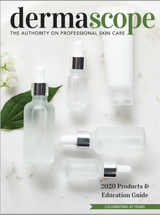Posted by Elina Fedotova, DERMASCOPE MAGAZINE P&E Guide 2020 on Feb 21st 2020
Know Your Ingredients - Educating clients, understanding best practices, and knowing what to avoid
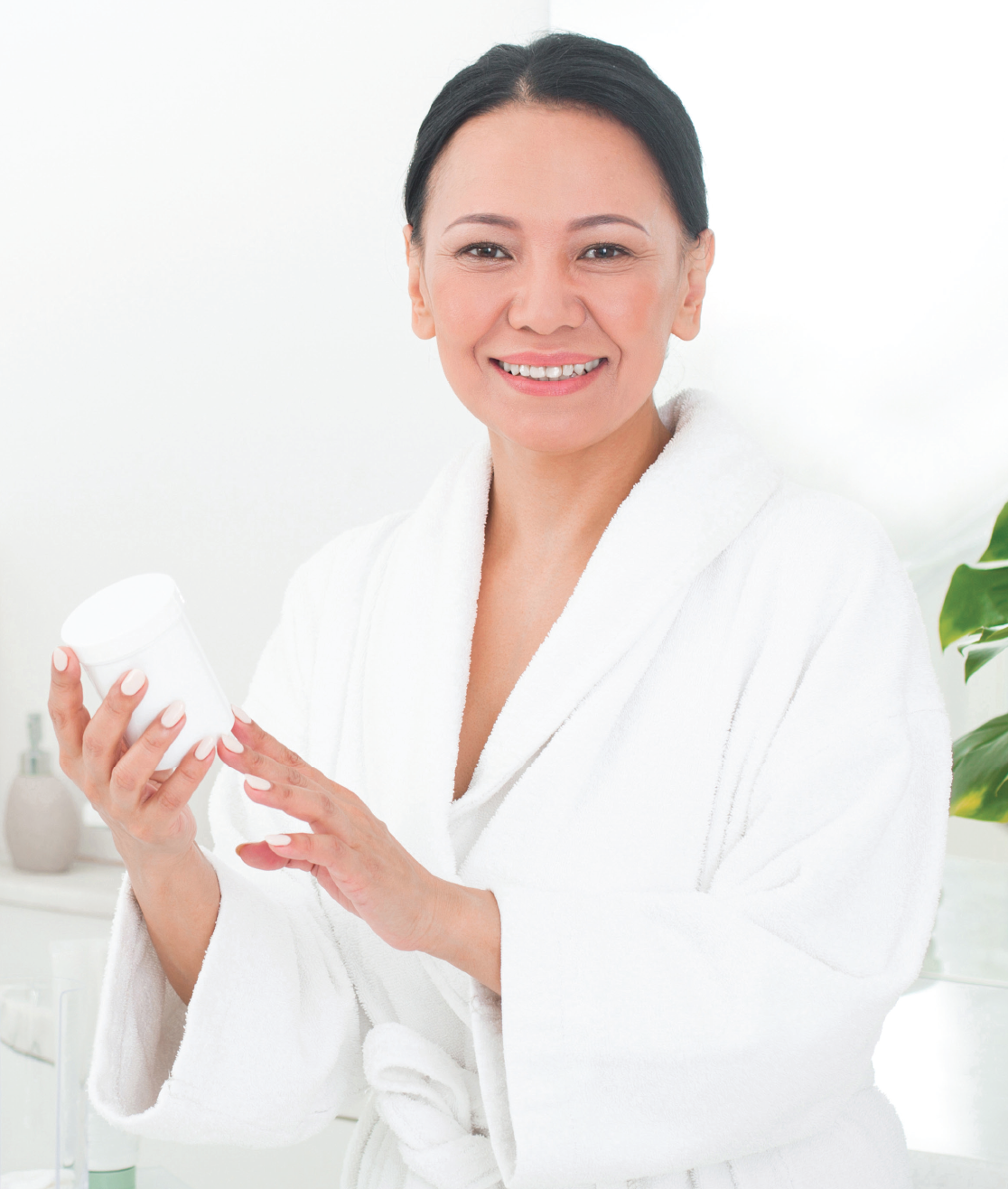
Skin care professionals all know that to achieve desirable corrective results for clients, they need to choose the most effective treatment products and protocols available. This is impossible without analyzing a complete list of ingredients and not just what is featured on the front of the bottle. Usually, featured ingredients look very good, but it is necessary to know what base they are dissolved in and what else is in there.
WHY IT IS IMPORTANT TO UNDERSTAND PRODUCT INGREDIENTS
Knowing the complete composition of a cream or serum selected for a client is very important in order to avoid undesirable ingredients and outcomes. For example, if a client has a topical sensitivity to substances like silicone or aspirin, make sure that the formulas selected does not contain dimethicone or any other hard to pronounce word that ends in “cone,”because they are all derivatives of silicone. For those sensitive to aspirin, watch out for salycilic acid or concentrated extract of aspen or willow bark because they contain natural substances called salicylates, which are chemically similar to aspirin.
Looking at just the featured ingredients on a product label can often be misleading. When looking at websites, brochures, or flyers produced by cosmetic companies, notice how they usually focus on only beneficial, healthy, and safe ingredients. For example, a night cream description may include resveratrol, vitamin C, or some botanical extracts, but only by reading the actual label will one discover what kind of emulsifiers, preservatives, emollients, and solvents are used in that particular formula. Remember, the first ingredient listed indicates the highest content of that substance in the product and the last ingredient contains the least.
HEALTH ISSUES
When selecting a product line to work with, make sure that it is not only effective, but completely safe. Professionals absorb more skin care product than any of their clients because they apply and massage them into their clients’ faces and bodies all day long. It is not wrong for a professionalto feel like they must protect themselves from the creams and lotions used on their clients during a procedure. It is one thing to use gloves during cleansing and extractions, but as a holistic aesthetician, it can be hard to deliver therapeutic, energy balancing massages, including acupressure, in gloves. It can be difficult to energetically connect with clients.
THE IMPORTANCE OF EDUCATING CLIENTS
How can skin care professionals encourage clients to use a particular skin care line if they are unfamiliar with the ingredients in those products? Aestheticians must stay up-to-date with the vast amount of research and new ingredients that continue to flood the market. Even after even the best facial, send a client home with corrective, nourishing skin care products that will improve their skin on a daily basis and deliver visible results. To do this, the skin care professional must be able to explain why they need to use a particular formulation and what role each ingredient will play in the restoration of their skin – be the expert.
Start by analyzing the product label together. Discuss with the client how particular ingredients will help improve hyperpigmentation or deep wrinkles or reduce excess sebum production. Bring to their attention the absence of parabens, artificial dyes, fragrances, and other harsh chemicals in the formulations suggested. Encourage them to practice clean beauty. After leaving the spa, they can compare the products they purchased to mass produced department store labels and they will love their skin care professional even more.
Today, skin care professionals work with clients who read articles about the benefits of different trending ingredients. Often they will ask questions about whether or not these trending ingredients will benefit their complexion. If unable to provide answers, the skin care professional risks not only losing credibility, but the client, as well.

DRY AND MATURE COMPLEXIONS
When working with a client who has dry, mature skin, make sure that the skin care products chosen contain powerful humectants. These include hyaluronic acid, tremela (snow mushroom) extract, aloe vera, vegetable glycerinand natural alpha hydroxy acids, as all of these ingredients help to hydrate the skin. Also, make sure that moisture in the skin will be locked in and protected by good, natural emollients like shea and coco butters or grapeseed and other organic plant oils.
Organic vegetable glycerin is a clear, colorless, and odorless liquid with a sweet taste. It is made from plant oils, is water-soluble, and is a food-grade cosmetic ingredient. Glycerin works on the skin as a humectant and emollient at the same time. It helps to hydrate and seal moisture into the skin and is also a wonderful, natural solvent for botanicals.Some other favorite ingredients for dry complexions include the following.
Organic Watermelon Extract: “Watermelon is loaded with antioxidants like vitamin A, vitamin C, and lycopene,” says Dr. Joshua Zeichner, the director of cosmetic and clinical research in dermatology at Mount Sinai Hospital in New York City. In fact, watermelon extract is a better source of lycopene than tomatoes. Watermelon extract not only hydrates the skin and helps prevent and reduce free radical damage, it hydrates, firms, brightens, and soothes the skin, as well.
Camel Milk: Camel milk is one of the latest trends in natural skin care ingredients. It works better than goat milk for masks and other formulations. Camel milk is rich in natural alpha hydroxy acids, which help exfoliate and hydrate the skin. It also a contains a beautiful blend of skin-firming nutrients, vitamins, and proteins. Because camels live the desert and sometimes must walk for several days without food or water, the milk the females produce has a dense concentration of nutrients.
Peptides: Peptides are fragments of proteins with short chains of up to 50 amino acids that can signal the body to regenerate different types of proteins, including collagen and elastin. Because of this they can deliver many antiaging and skin restoring benefits. Recent research shows that each type of peptide works in a very specific way to delivera particular benefit to the skin, including firming and tightening, lightening, hyperpigmentation reduction, and the relaxation of overactive facial muscles.
Extracts of Wild Mushrooms: “Mushrooms are rich in B complex vitamins, which can do everything from calm inflammation to brighten the skin,” says Dr. Zeichner. White truffle extract is a pricey skin restoring ingredient. In addition to offering a blend of antioxidants, it has a high concentration of vitamin B, which is essential for protein synthesis. Niacin or vitamin B3 is water-soluble and sparks cellular metabolism and DNA repair.
The much more affordable extract of shiitake mushroom is also an effective ingredient. In addition to its hydrating and skin brightening effects, it has also been shown to induce the production of superoxidase dismutase (SOD) and glutathione peroxidase(GPx). Both of these antioxidant enzymes are known for their ability to decrease the effect of oxidative stress on the skin. Other beneficial mushroom extracts include blends of different wild mushrooms like chaga, reishi, maitake, and morels.
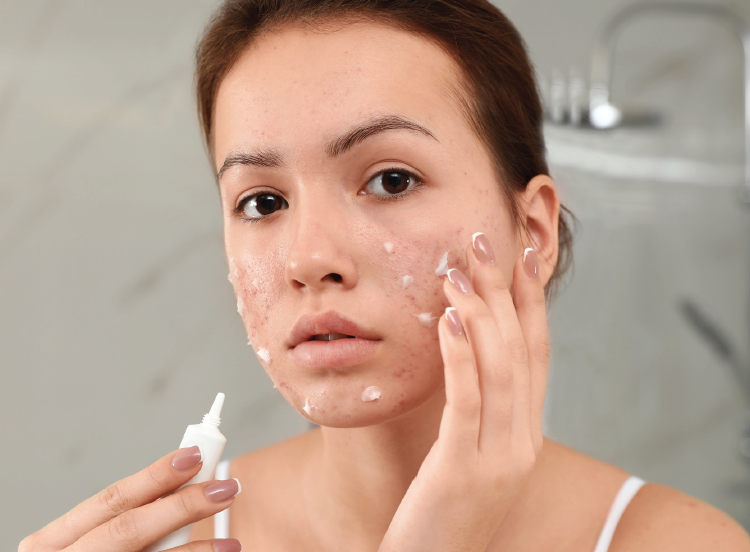
ACNE AND ROSACEA
Problematic complexions like acne and rosacea call for skin ingredients with detoxifying, antibacterial, and calming properties.
Salicylic acid naturally occurs in aspen and willow bark extract and other botanicals. It is an effective ingredient, especially for clients with inflamed complexions.
Fulvic acid that is naturally extracted from special types of soil benefits the skin with a nutritious cocktail of trace minerals and electrolytes, which help nourish and heal rosacea-prone complexions.Classic botanicals for problem skin include burdock root, calendula, plantain, St. John’s wort, dandelion root, and milk thistle. Recent research shows that skin care formulations containing extract of milk thistle can help calm inflammation and reduce hyperpigmentation due to the presence of silymarin flavonoids.
Cannabidiol (CBD) extract can benefit any skin complexion. It calms and soothes irritated, sensitive skin. It is also a powerful antioxidant that can help restore sun damaged and skin aging complexions.
CBD is one of over 80 compounds called cannabinoids extracted from the cannabis sativa plant and is the non-psychotropic component of hemp. A 2014 study explored the effects of CBD on human sebocytes, the cells that create sebum. The findings showed that CBD helped balance sebum production.
EMULSIFIERS
Most creams and lotions on the market are made from a blend of water-soluble and oil-soluble skin nourishing ingredients. As skin care professionals know, oil and water do not mix naturally. For them to bond together, they need emulsifiers. This is what helps create a creamy substance called an emulsion. Conventional emulsifiers for personal care products often include chemical mixtures with long complicated names like sodium laureth sulfate, carbomer, PEG-20 stearate, propylene glycol, stearyl alcohol NF, polysorbate 80, and many others. To learn more about the properties and side effects of these ingredients, information can be found online on the International Nomenclature of Cosmetic Ingredients (INCI) database and EnvironmentalWorking Group website. The Environmental Working Group is a non-profit organization dedicated to protecting human health and the environment.
Silicone-based emulsifiers like dimethicone have recently become quite popular among formulators. Dimethicone creates a silky coat over the skin and improves the spreadability of creams and lotions. The Food and Drug Administration has approved the use of dimethicone in over-the-counter products.However, it is not recommended to use dimethicone in formulations because it forms a saran wrap-like film over the skin. One of the main functions of the largest organ of the body is elimination, but dimethicone and other silicone-based ingredients can create a greenhouse effect over it, trapping impurities like sweat and sebum under this non-biodegradable coating.
To avoid skin irritating chemicals, work with natural emulsifiers like lecithin, afood-grade phospholipid emulsifier. Phospholipids are fat molecules which are able to create emulsions by binding water and oils together. In addition to forming emulsions, they can help active ingredients penetrate more effectively. During the emulsification process, they create liposomes, which act as vehicles for botanical extracts, vitamins, and minerals. Liposomes then deliver these nutrients through the stratum corneum to nourish the live cells of the skin.
One option is sunflower lecithin, which is also popular in the food industry, due to its emulsifying and antioxidant properties.
Stearic acid is a natural vegetable wax and excellent thickener and emulsion stabilizer for lotions and creams. It also adds a silky feel to skin care products and helps with spreadability.
“Being aware of the ingredients in products used in the spa, as well as understanding which are beneficial and which should be avoided, is crucial for client safety and optimal results.”
PRESERVATIVES
Skin care products need to be protected from the proliferation of pathogens (harmful bacteria) and yeast (fungi).
Unfortunately, many conventional preservatives are not only toxic to bad bacteria but to humans, as well. For this reason, scientists continue to look for safe, skin friendly, antimicrobial substances to use as preservatives. Happily, many formulators have started to avoid parabens and other chemical preservatives with questionable reputations.
Phenoxyethanol is one of the most common conventional cosmetic preservatives used today. It is a paraben, formaldehyde-free, and is approved for use around the world. Often, it is combined with sorbic acid to protect formulations from getting moldy.
NATURAL PRESERVATIVES
Willow and aspen bark extracts are rich in salicylates, which help to naturally protect cosmetic and personal care products from contamination.
Black currant extract is another botanical preservative. It can be used to reduce the load of conventional preservatives in a formulation or can be combined with other natural antimicrobials to protect skin care products. Ribes nigrum or black currant is a small fruiting shrub native to Europe and Russia with dark purple and very delicious berries It is rich in vitamin C and other vitamins. Phytochemicals extracted from black currant have antimicrobial properties and can successfully help to preserve cosmetic and personal care products. They also contain high concentrations of antioxidants, ellagitannins, and anthocyanins, which are polyphenols and help to heal and calm the skin.
Today natural preservatives are often made with the help of probiotics, friendly bacteria that promote a healthy skin microbiome and improve its protective barrier. Those skin nourishing preservatives are created by fermenting aloe, radish, or coconut extracts with lactobacillus. In addition to antimicrobial and antifungal properties, this natural and effective multifunctional preservative helps to hydrate the skin.
Many essential oils have historically been used in beauty formulations not only for their sensual aromas but also as natural preservatives. All of them have antibacterial properties but some more than others. Essential oils, like cinnamon, clove, or oregano, help to protect skin care products from contamination because they have strong antimicrobial and antifungal properties. However, skin care professionals cannot fully rely on them because they are volatile.
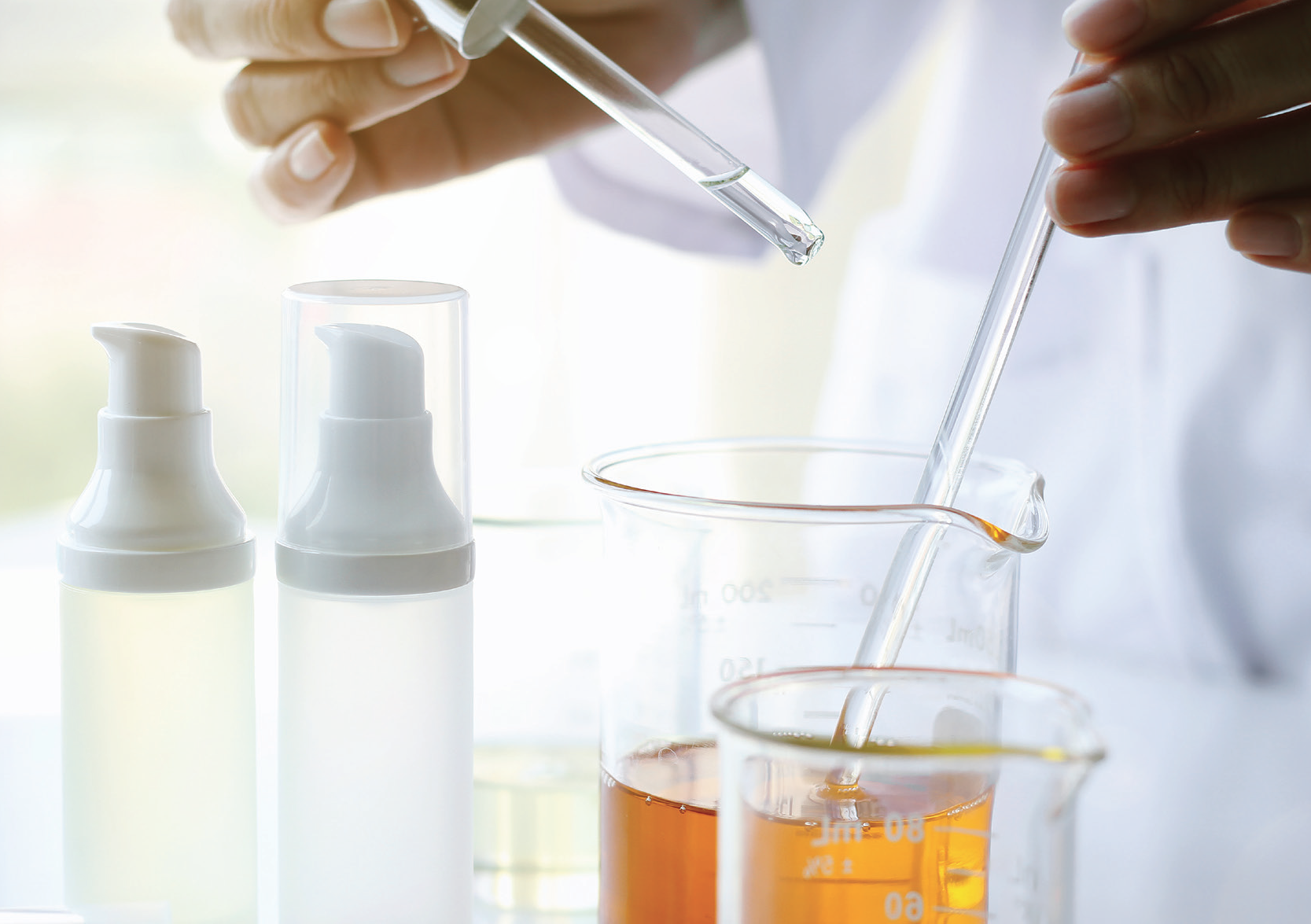
INGREDIENTS TO AVOID
Beauty and skin care products are designed to look beautiful, but many would argue that some of the ingredients they contain are not. According to United States researchers, one in eight of the 82,000 ingredients used in personal care products are industrial chemicals. They include carcinogens, pesticides, reproductive toxins, and hormone disrupters.
Of course, the only way to discover the plasticizers, degreasers, and surfactants included in many beauty products today is to be educated. While it would be impossible to list all questionable ingredients, here are a few to steer clear of.
Parabens: A group of chemicals called parabens, commonly found in lotions and other personal care products, may be more dangerous, even at low levels of exposure, than previously thought, according to a study published in the journal Environmental Health Perspectives in 2016. Parabens are used to preserve personal care products like shampoos, cosmetics, body lotions, and sunscreens. The problem is that they mimic estrogens, which have been linked to an increased risk of breast cancer and other reproductive problems. Alone, parabens have been considered safe; however, the study showed that when a particular type of paraben was exposed to human growth factors present in the body, they caused it to accelerate breast cancer cell proliferation.
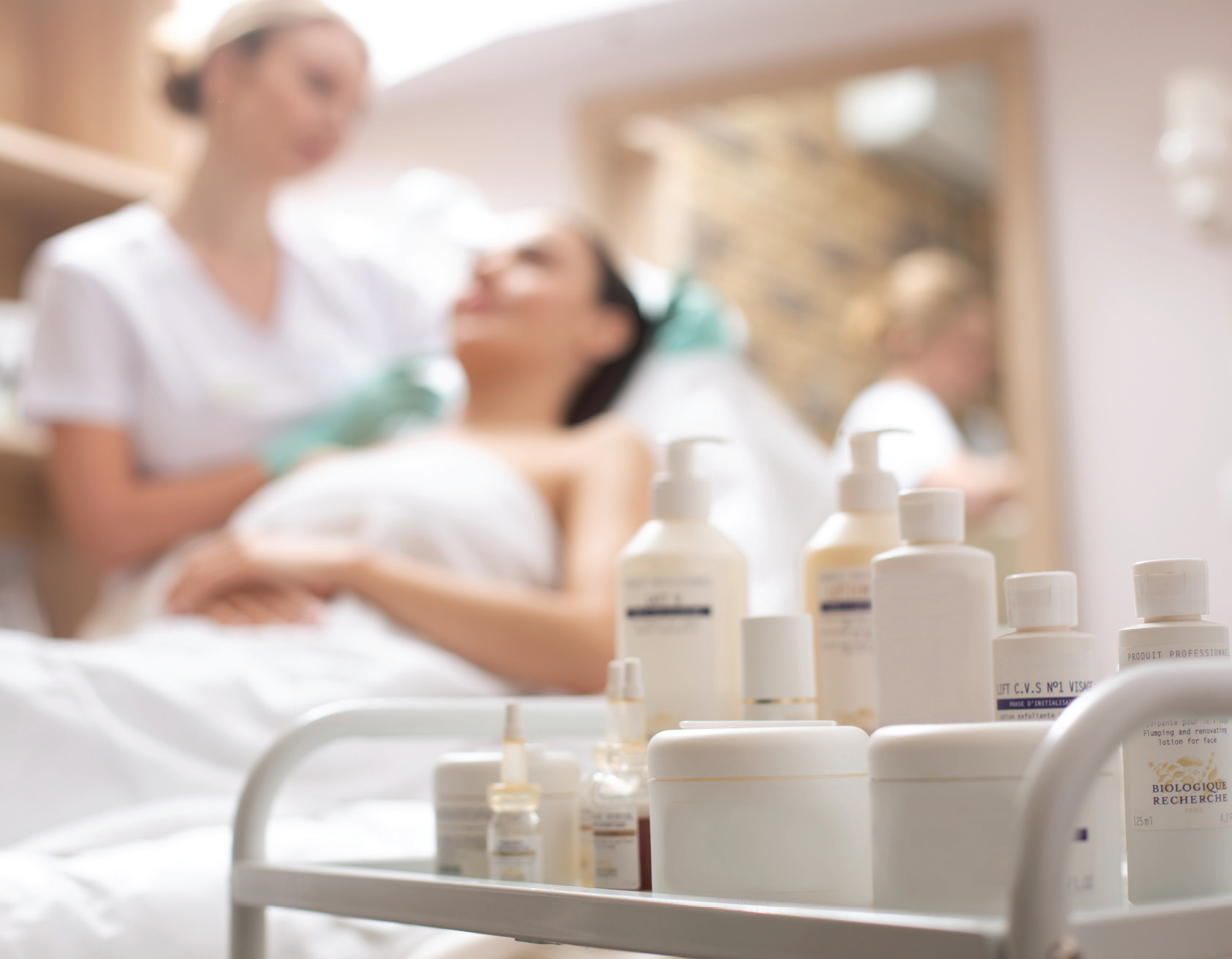
Phthalates: Phthalates are a group of chemicals used to make plastics more flexible and durable. Phthalates can also be used as solvents (dissolving agents) for other materials. They can be found in hundreds of products, including soaps, shampoos, hair sprays, and nail polishes. The hazards posed by these chemicals continue to be studied by several government agencies. At least one type of phthalate is considered to be an endocrine disrupter that can cause cancer, while others have been shown to interfere with human reproduction or development.
Fragrance: The word fragrance conjures up images of flowers and exotic oriental oils. In truth, the Environmental Working Group reports that, while popular perfumes, colognes, and body sprays may contain trace amounts of natural essences, the rest of the product is a potpourri of potentially hazardous, synthetic chemicals. “A rose may be a rose,” reports the Environmental Working Group. “But that rose-like fragrance in your perfume may be something else entirely, concocted from any number of the fragrance industry’s 3,100 stock chemical ingredients, the blend of which is almost always kept hidden from the consumer.” In order to protect trade secrets, fragrance makers are not required to list their ingredients on the label. “Among them are chemicals associated with hormone disruption and allergic reactions and many substances that have not been assessed for safety in personal care products,” If they continue not using organic skin care products, the scent of the formulations used likely contains some of these chemicals, which do not contribute to healthy skin.
Nanoparticles: Nanoparticles are so small they can only be seen under an electron microscope. They are often used to create translucent sunscreens with zinc and titanium oxide. Zinc oxide offers broad-spectrum protection and is a physical sunscreen. In its natural state, it is a white pigment that can leave white marks on the skin and that is why, since 2008, some companies started to grind zinc oxide into tiny nanoparticles to achieve translucent sunscreens. But, in this form, zinc oxide is not as safe and effective. Human and animal studies show that inhaled nanoparticles can gather in the respiratory tract. Moreover, animal studies show that nanoparticles can invade the bloodstream and move onto other organs.
Being aware of the ingredients in products used in the spa, as well as understanding which are beneficial and which should be avoided, is crucial for client safety and optimal results.

